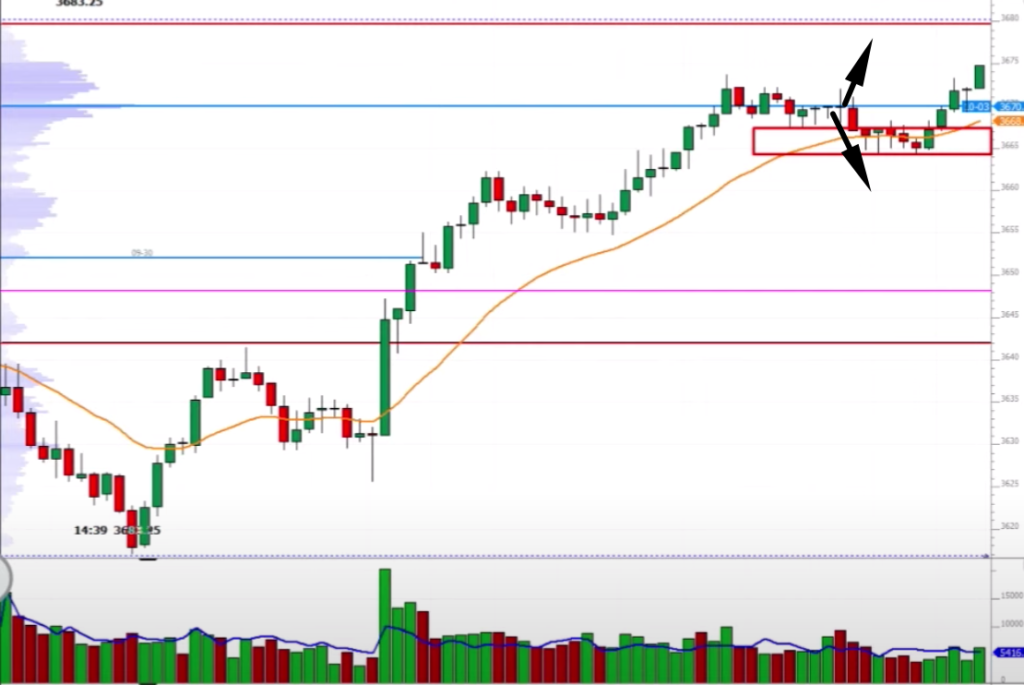How To Scalp When Trade Goes Wrong Introduction
When you are scalping futures, you most likely will be using the order flow as your guiding light. This means, that you are adjusting to what you see. You are much more flexible yet responsible for managing your risk well. Many times, you won’t have a fixed stop. You will have a stop range in which you operate and you will adjust based on the incoming data.
In this blog post, we will break down the EMINI S&P500 trade that went wrong. When this trade idea develops differently than expected, we use new information to trade around what we see. The goal of scalping is to stay flexible and open-minded, not rigid and closed-minded. If you are into scalping, don’t forget to check our previous post 2 Ways To Scalp The Exhaustion Move.
This article is based on the video down below.
The Scalping Trade Idea
Introduction
This trade idea is about what to do when a trade goes wrong. We are not aiming for high ticks, but a nice quick scalp. It is all about the order-flow. Given that we are in the uptrend, we want to use that trend in our favor. There is a nice little flag forming at the top extreme of the trend. The idea is to observe the order-flow first and spot the opportunity to access the trade.
We understand the bigger picture:
- trending day
- flag forming
- order-flow absorbing
Now it is all about the location. Where is the best place to enter?
Accessing The Scalp Idea
The moment we understand the direction, we are looking for absorption. We are trying to understand the reference points. The absorption level is not necessarily the place to access the trade, because many times, there will be probes both up and down beneath and above the absorption just to test the strength of buyers and sellers.
If you observe the price action starting at 9:09, you can understand that
- absorption happens around 70
- the good location to get long is at 67 (in direction of the trending day)
- possibly if you want to add into the flag short, the fade starts at 71
You enter at 67 and you know that the probe might get you offsite a bit. But given the structure, you don’t expect a bigger drop. This is the location where you are considering entering long. But, the second you enter, the market immediately drops two points. So what do you do?

When Scalp Goes Wrong
Your trade dropped from 67 to 65 very quickly. You have two options:
- Observe the 65-67 action – if 67 cannot be traded over multiple attempts – cover your long trade and call it a trade
or
- observe 65, this is your new reference point – the same applies like in the example above. Observe attempts at 65. If multiple attempts fail, get long to cover some at 67 and hold the rest at least to 71 and beyond.
Key Takeaway
The goal of scalping is to stay flexible and open-minded, not rigid and closed-minded. Do not average down. Have pre-set order-flow rules that can work with new information quickly. Scalping is a game of absolutely straightforward decision-making. No, what if, should have, would have. Stay focused, don’t average, and constantly check if you are sticking to your scalping rules. Those rules will differ from your swing rules. Be aware of the difference. If you can’t make the rules as clear as possible, stop scalping and make some time for defining the rules.
If you want to learn how Axia Traders trade other volume-derived patterns, visit the free workshop we are running at: https://go.elitetraderworkshop.com/Free
If you liked this type of content, you might check these videos as well:
- How To Manage & Exit A Failed Breakout Trade
- Sign Of A Breakout About To Fail – Price Ladder Trading
- Market Profile Trading: Better Breakouts with Context and Volume Profiling
Do you like what you have been reading? If you would like to improve your game, definitely check one of our courses that teach you all the techniques presented by AXIA traders from a market profile, footprint, or order-flow. If you are someone who likes to trade the news, we have a great central bank course. And if you are really serious about your future trading career, consider taking AXIA’s 6-Week Intensive High-Performance Trading Course.
Thanks for reading again and until next time, trade well.
JK




